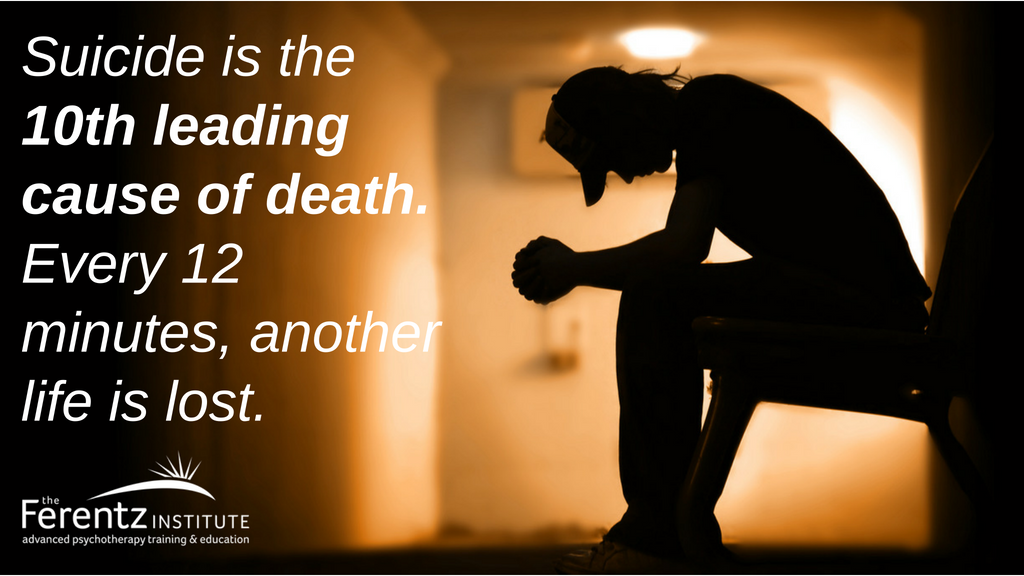
Suicide is frighteningly prevalent in the United States. It’s the 10th leading cause of death, and every 12 minutes another life is lost. It’s estimated that for every person who commits suicide, six people are intimately impacted. Sadly, it often takes the suicide of celebrities to bring the tragic issue back into the spotlight. Loved ones and society at large try to understand and attach meaning to seemingly senseless acts. It’s human nature to want answers: to fill in the blanks. How could someone who appeared to have everything- wealth, success, fame, a family-possibly choose to take their own life? And in different circumstances, how can a teenager with everything still ahead of him or her decide to stop living? Inevitably, survivors ask, “What warning signs did I miss?” “Could I have said or done anything to prevent it?”
These are the natural questions that get asked in the wake of such tragedies. I have worked with several families as well as therapists who have had to process a suicide, and their pain and confusion is palpable. As a trauma therapist, I try to help people process the relentless barrage of internal questioning and the myriad intense emotions that accompany such loss. In reality, there are never “good enough” answers to the painful questions that surround a suicide.
“Ultimately no one can control another human being and their choices.”
Ultimately, it’s important to accept that the decision to end one’s life is the sole responsibility of the person who does so. When others attempt to insert themselves into the equation by imagining what they could have done to prevent it, they are trying to take back a sense of power and control that suicide has taken from them. It can be humbling and frightening to realize that ultimately no one can control another human being and their choices. Yet with support, it can also be freeing to grieve and then accept that reality. The American Foundation for Suicide Prevention (www.afsp.org) and Alliance of Hope (www.allianceofhope.org) have excellent resources for loved ones who have lost someone to suicide. It’s critically important to focus on the support that family and friends need and deserve to navigate the shock, grief, anger, and other complex feelings that can be emotionally overwhelming.
Shifting from “Why did it happen?” to “What can I do with it now?”
When the timing is right, in addition to helping to extricate loved ones from the “guilt,” I try to help them shift from “Why did it happen?” to “What can I do with it now?” In time, survivors can actually begin to attach some degree of meaning: a way in which the loss can yield new thinking, a behavioral change, a new perspective, a call to action. Perhaps we can begin to attach meaning by using the now constant reminder of recent celebrity suicides as an opportunity to take seriously the impact of undiagnosed or inadequately treated depression, substance abuse, or the traumatic life events that haunt people who become suicidal. We need to urge those who are struggling and in pain to reach out for support before choosing a permanent solution to temporary, albeit overwhelming problems.
Hotlines such as The National Suicide Prevention Hotline (1-800-273-8255) can truly help. They are typically staffed by trained mental health professionals who can provide insight, perspective, resources, and alternatives to ending one’s life. Texting CONNECT to 741741, the Crisis Textline, is another good option. Since the decision to end one’s life is typically an impulsive act done in isolation, having access to a phone and a hotline or text number can be potentially life-saving.
There are also excellent websites that identify the warning signs of suicidal ideation as well as providing good resources. www.Save.org is a great example. The Trevor Project (www.thetrevorproject.org ) is a good website offering resources and crisis and suicide prevention for LGBTQ youth.
Suicide and Social Media
It’s just as important to take seriously the postings on social media that either indirectly allude to suicidal ideation or explicitly describe someone’s intention and plan. Teenagers, in particular, use social media to anonymously communicate their struggles and their pain. I always encourage parents who feel concerned about their child’s emotional wellbeing to have access to their social media and pay attention to their pictures and posts.
Although there is often a degree of voyeurism and sensationalism attached to reports of celebrity suicides, they help to shine a necessary spotlight on a far-reaching problem that impacts countless people and leaves behind intense suffering in its wake. However, therapists should be aware that celebrity suicides often create a spike of additional attempts, “normalizing” the behavior and presenting it as a viable option to those who suffer in silence.

